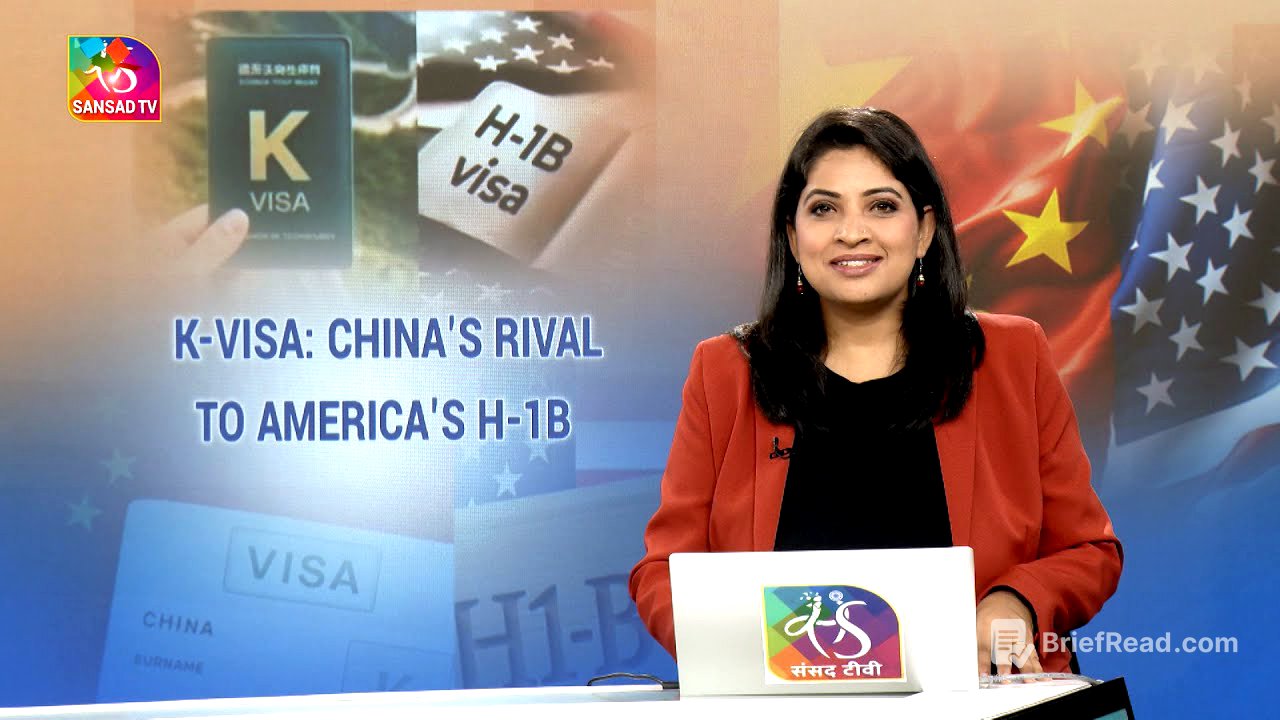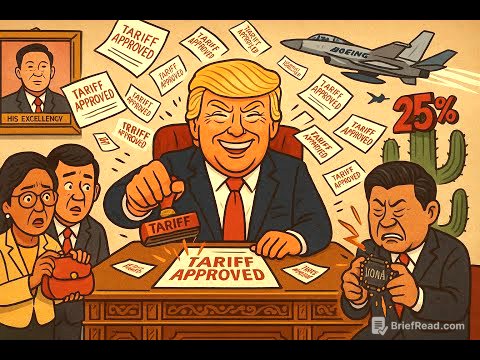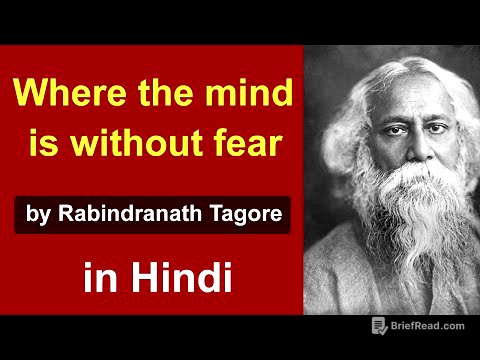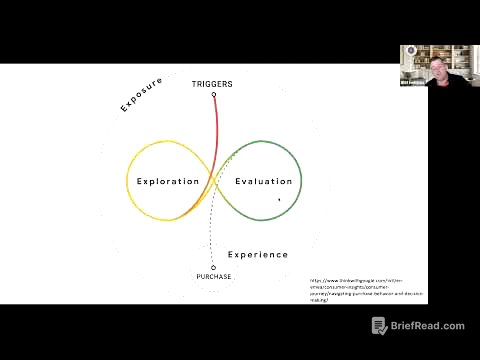TLDR;
This episode of Sansad TV's "Perspective" discusses China's new K visa, designed to attract young STEM graduates and research scholars globally, and its implications in the context of rising US H1B visa costs. The discussion covers the opportunities and challenges this visa presents, especially for Indian professionals, considering factors like geopolitical tensions, language barriers, and long-term settlement prospects. The experts also explore whether this could be an opportunity for India to foster its own talent.
- China's K visa aims to attract global STEM talent amid rising US H1B visa costs.
- Opportunities include no employer sponsorship requirement and potentially lower fees.
- Challenges involve language barriers, geopolitical tensions, and uncertain long-term settlement prospects.
- India has an opportunity to foster its own talent and create an attractive ecosystem.
Introduction: China's New K Visa [0:13]
The host introduces the topic of China's new K visa, effective from October 1, 2025, which aims to attract young STEM graduates and research scholars from around the world. This move is seen as a rare attempt by Beijing to open its doors to global talent, especially in light of the US increasing H1B visa fees. The discussion will explore whether the K visa can become a significant opportunity for scholars and professionals, the opportunities it creates, and the remaining obstacles for those interested in living and working in China.
The US-China Talent War [1:32]
Professor Kondapalli views China's K visa initiative as part of the ongoing US-China competition, especially after the US increased tariffs. China has a history of importing foreign expertise, like the Soviet technicians in the 1950s and foreign experts during the Four Modernizations in the 1980s. Today, China aims to advance in science and technology globally, having achieved success in areas like deep-sea AI, electric vehicles (EVs), and solar panels. To maintain this edge, China needs to import a large number of STEM-educated personnel. However, China's economy is projected to slow down due to tariffs, and there are reports of employees not receiving regular salaries, which could affect the K visa program.
Strategic Timing and Potential Benefits of K Visa [4:34]
Ambassador Prabhakar emphasizes the strategic timing of the K visa, coinciding with the US's decision to increase H1B visa fees. This visa is designed to attract young foreign talent in STEM fields by providing an easier path to enter the country. Unlike the H1B visa, the K visa focuses on the individual rather than the employer, allowing applicants to enter China first and then decide on their course of action, whether it's studying, researching, starting a startup, or joining a lab. This is particularly appealing to STEM graduates from countries like India, who were major beneficiaries of the H1B visa but are now seeking alternatives due to rising costs and restrictions in the US.
Challenges and Limitations of the K Visa [6:35]
Ambassador Prabhakar points out several potential challenges with the K visa. The eligibility requirements are unclear, and details about financial incentives and pathways to long-term settlement or citizenship are vague. Language is another barrier, as most Chinese tech companies operate in Mandarin, potentially limiting opportunities for non-Chinese speakers. Geopolitical tensions between India and China could also affect how willing China is to offer opportunities to Indian professionals. Additionally, unlike the US, China does not typically offer citizenship to foreigners, and it is uncertain whether the K visa will lead to permanent residency.
Viability of K Visa and Ground Realities [8:00]
Professor Kondapalli notes that the H1B visa program issues about 85,000 visas annually, with companies like Amazon hiring thousands. Infosys, Wipro, and others have reduced their H1B applications due to increasing costs. The K visa has no fees and doesn't require employer sponsorship, and there's no annual limit like the H1B visa. However, China had restricted travel due to COVID-19 lockdowns until December 2022, preventing many international students from entering the country. Both China and the US have shown unpredictability in visa processes. Germany is emerging as an attractive alternative for STEM graduates.
Academic Freedom and Integration Challenges [12:00]
Professor Kondapalli highlights that academic freedom in China is nearly non-existent, with new restrictions imposed on universities and higher education institutions in the past decade. STEM graduates applying for the K visa may face social problems, including language barriers and restrictions on free movement. While China has experimented with free trade zones, they haven't been very successful in terms of employment opportunities. Chinese companies often replace foreign employees with local talent once they acquire the necessary skills.
Geopolitical Implications and Future Prospects [14:59]
Ambassador Prabhakar notes that it's unlikely Indian professionals will flock to China en masse, but if China removes restrictions and makes the system more attractive than the H1B visa, it could become a global hub for young talent. Contradictory visa policies reflect the US-China rivalry for technological dominance, with India playing a role. Other countries like Germany, South Korea, and New Zealand are also easing visa rules to attract talent. The K visa removes some barriers, especially regarding employer sponsorship, but challenges like language, culture, and limited paths to permanent settlement will limit its appeal.
Specific Sectors and Incentives for STEM Professionals [17:26]
Ambassador Prabhakar believes the K visa will open new possibilities in all STEM fields, though a large-scale rush by Indian STEM professionals is unlikely. If China makes revisions to the program, areas like research, education, and technology could see more Indian talent. The US remains the preferred destination due to opportunities for permanent settlement. China has long offered incentives to attract high-level talent, particularly ethnic Chinese migrants, through programs like the Thousand Talents Plan. K visa holders can expect financial incentives, startup grants, tax benefits, and research funding, especially in fields like artificial intelligence, quantum computing, and biotechnology.
India's Opportunity to Foster Talent [21:30]
Professor Kondapalli suggests that India should provide more incentives to retain STEM graduates, especially from IITs and IIMs, and improve infrastructure. The cost of STEM education in the US has increased significantly, with application fees and total costs for visas being very high. The Indian government should seize this opportunity to retain and nurture its best talent to drive growth and achieve its goals by 2047.









